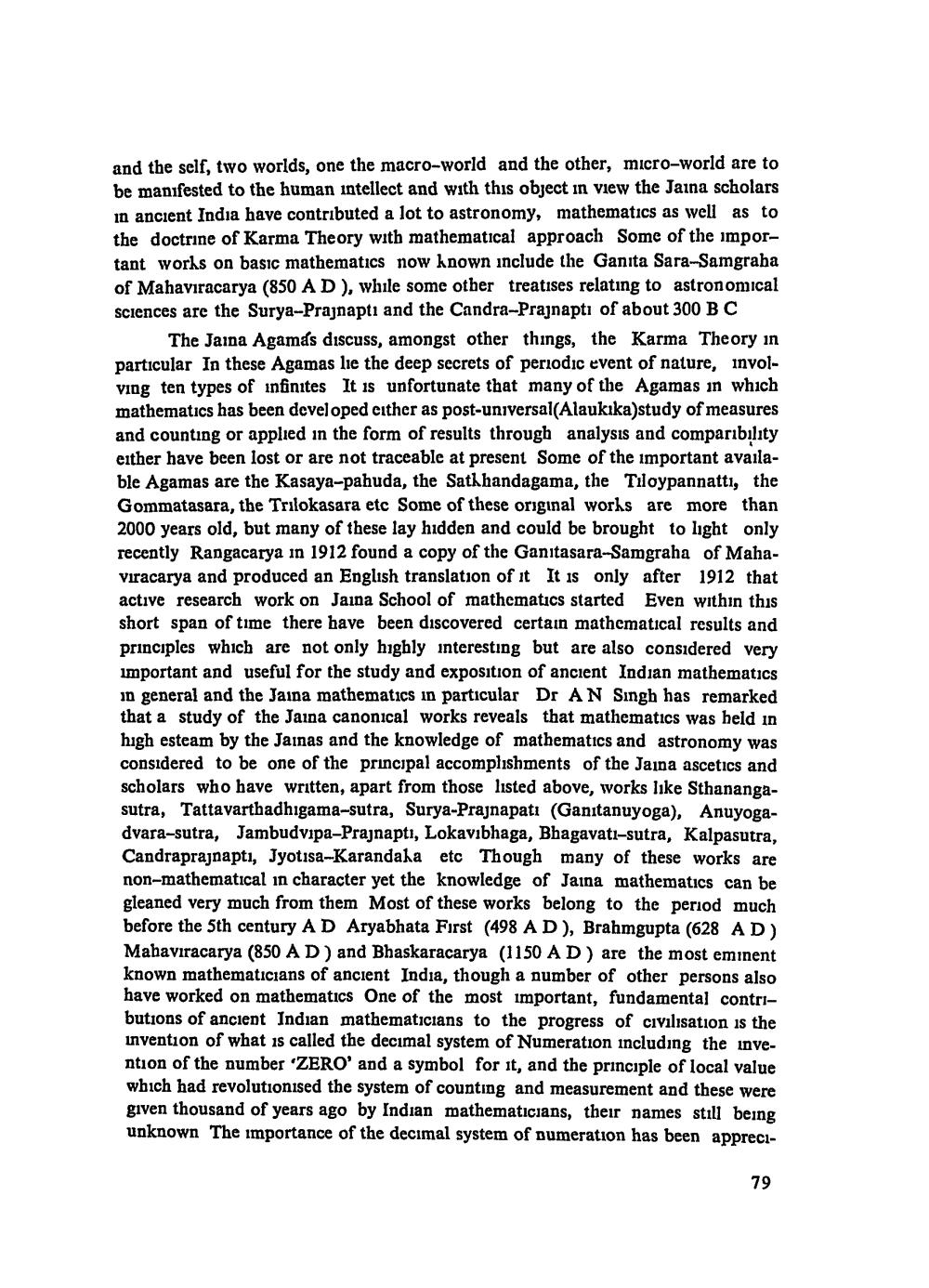________________
and the self, two worlds, one the macro-world and the other, micro-world are to be manifested to the human intellect and with this object in view the Jaina scholars in ancient India have contributed a lot to astronomy, mathematics as well as to the doctrine of Karma Theory with mathematical approach Some of the important works on basic mathematics now known include the Ganita Sara-Samgraha of Mahaviracarya (850 AD), while some other treatises relating to astronomical sciences are the Surya-Prajnapti and the Candra-Prajnaptı of about 300 BC
The Jaina Agamas discuss, amongst other things, the Karma Theory in particular In these Agamas lie the deep secrets of periodic event of nature, involving ten types of infinites It is unfortunate that many of the Agamas in which mathematics has been developed either as post-universal(Alaukika)study of measures and counting or applied in the form of results through analysis and comparıbility either have been lost or are not traceable at present Some of the important available Agamas are the Kasaya-pahuda, the Sath handagama, the Tuloypannatti, the Gommatasara, the Trilokasara etc Some of these original works are more than 2000 years old, but many of these lay hidden and could be brought to light only recently Rangacarya in 1912 found a copy of the Ganitasara-Samgraha of Mahaviracarya and produced an English translation of it It is only after 1912 that active research work on Jaina School of mathematics started Even within this short span of time there have been discovered certain mathematical results and principles which are not only highly interesting but are also considered very important and useful for the study and exposition of ancient Indian mathematics in general and the Jaina mathematics in particular Dr AN Singh has remarked that a study of the Jaina canonical works reveals that mathematics was held in high esteam by the Jainas and the knowledge of mathematics and astronomy was considered to be one of the principal accomplishments of the Jaina ascetics and scholars who have written, apart from those listed above, works like Sthanangasutra, Tattavarthadhigama-sutra, Surya-Prajnapati (Ganıtanuyoga), Anuyogadvara-sutra, Jambudvipa-Prajnapti, Lokavibhaga, Bhagavatı-sutra, Kalpasutra, Candraprajnapti, Jyotisa-Karandala etc Though many of these works are non-mathematical in character yet the knowledge of Jaina mathematics can be gleaned very much from them Most of these works belong to the period much before the 5th century AD Aryabhata First (498 A D), Brahmgupta (628 AD) Mahaviracarya (850 AD) and Bhaskaracarya (1150 AD) are the most eminent known mathematicians of ancient India, though a number of other persons also have worked on mathematics One of the most important, fundamental contributions of ancient Indian mathematicians to the progress of civilisation is the invention of what is called the decimal system of Numeration including the invention of the number 'ZERO' and a symbol for it, and the principle of local value which had revolutionised the system of counting and measurement and these were given thousand of years ago by Indian mathematicians, their names still being unknown The importance of the decimal system of Bumeration has been appreci
79




